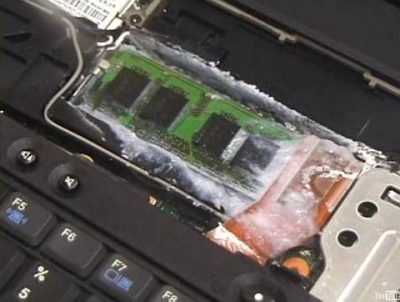Cold Boot Attack is yet another method used to steal data. The only thing special is that they have direct access to your computer hardware or the whole computer. This article talks about what is Cold Boot Attack and how to stay safe from such techniques.

What is Cold Boot Attack
In a Cold Boot Attack or a Platform Reset Attack, an attacker who has physical access to your computer does a cold reboot to restart the machine in order to retrieve encryption keys from the Windows operating system
They taught us in schools that RAM (Random Access Memory) is volatile and cannot hold data if the computer is switched off. What they should have told us should have been …cannot hold data for long if the computer is switched off. That means, RAM still holds data from few seconds to few minutes before it fades out due to lack of electricity supply. For an ultra-small period, anyone with proper tools can read the RAM and copy its contents to a safe, permanent storage using a different lightweight operating system on a USB stick or SD Card. Such an attack is called cold boot attack.
Imagine a computer lying unattended at some organization for a few minutes. Any hacker just has to set his tools in place and turn off the computer. As the RAM cools down (data fades out slowly), the hacker plugs in a bootable USB stick and boots via that. He or she can copy the contents into something like the same USB stick.
Since the nature of the attack is turning off the computer and then using the power switch to restart it, it is called cold boot. You might have learned about cold boot and warm boot in your early computing years. Cold boot is where you start a computer using the power switch. A Warm Boot is where you use the option of restarting a computer using the restart option in the shutdown menu.
Freezing the RAM
This is yet another trick on the sleeves of hackers. They can simply spray some substance (example: Liquid Nitrogen) on to RAM modules so that they freeze immediately. The lower the temperature, the longer RAM can hold information. Using this trick, they (hackers) can successfully complete a Cold Boot Attack and copy maximum data. To quicken the process, they use autorun files on the lightweight Operating System on USB Sticks or SD Cards that are booted soon after shutting down the computer being hacked.
Steps in a Cold Boot Attack
Not necessarily everyone uses attack styles similar to the one given below. However, most of the common steps are listed below.
- Change the BIOS information to allow boot from USB first
- Insert a bootable USB into the computer in question
- Turn off the computer forcibly so that the processor doesn’t get time to dismount any encryption keys or other important data; know that a proper shutdown may also help but may not be as successful as a forced shutdown by pressing the power key or other methods.
- As soon as possible, using the power switch to cold boot the computer being hacked
- Since the BIOS settings were changed, the OS on a USB stick is loaded
- Even as this OS is being loaded, they autorun processes to extract data stored in RAM.
- Turn off the computer again after checking the destination storage (where the stolen data is stored), remove the USB OS Stick, and walk away
What information is at risk in Cold Boot Attacks
Disk encryption keys and passwords are the most common information/data at risk. A cold boot attack usually aims to retrieve disk encryption keys illegally, without authorization.
The last things to happen when in a proper shutdown are dismounting the disks and using the encryption keys to encrypt them, so it is possible that if a computer is turned off abruptly, the data might still be available.
Securing yourself from Cold Boot Attack
On a personal level, you can only ensure that you stay near your computer until at least 5 minutes after it is shut down. Another precaution is to shut down properly using the shutdown menu instead of pulling the electric cord or using the power button to turn off the computer.
You can’t do much because it is not largely a software issue. It is related more to the hardware. So, equipment manufacturers should take the initiative to remove all data from RAM as soon as possible after a computer is turned off to avoid and protect against cold boot attacks.
Some computers now overwrite RAM before completely shut down. Still, the possibility of a forced shutdown is always there.
BitLocker uses a PIN to access RAM. Even if the computer has been hibernated (a state of turning off the computer), when the user wakes it up and tries to access anything, first he or she has to enter a PIN to access RAM. This method is also not fool-proof as hackers can get the PIN using one of the methods of Phishing or Social Engineering.
Summary
The above explains a cold boot attack and how it works. Some restrictions prevent 100% security from being offered against a cold boot attack. But as far as I know, security companies are working to find a better fix than simply rewriting RAM or using a PIN to protect the contents of RAM.
Now read: What is a Surfing Attack?
I know some old people that would get all scared after reading this.